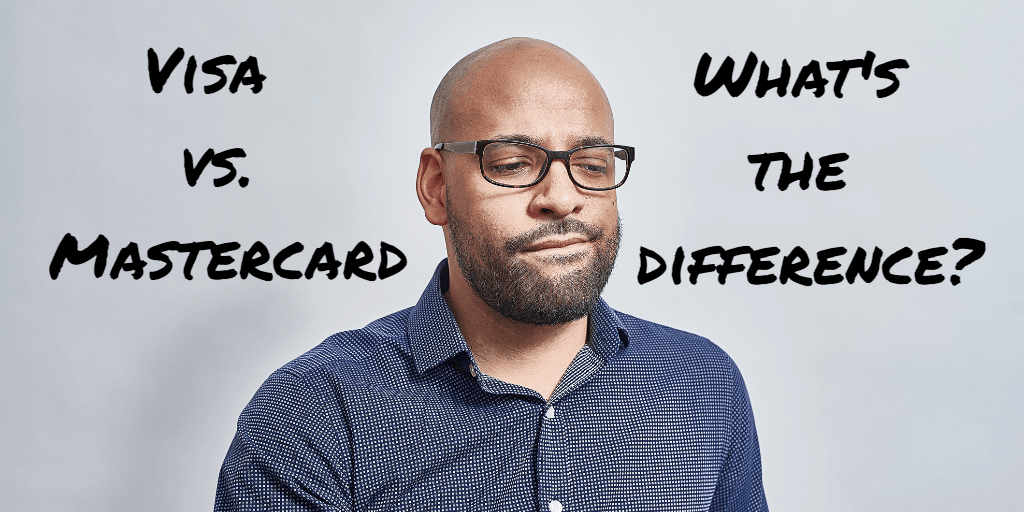When it comes to two of the world’s biggest names in the credit card industry, aka Visa versus Mastercard, the similarities far outweigh the differences. Both companies are credit card-processing networks, meaning they don’t issue cards or extend lines of credit, and the cards bearing their brands are accepted widely.
But, yes, subtle though they might be, there are differences. And if you’re struggling to choose between them, those differences could help you decide. Let’s take a closer look at these card issuers and see what those differences are.
1. Credit card acceptance
The great thing about Visa and Mastercard: both are accepted pretty much everywhere. In fact, from a global perspective, the difference between the two is minimal. Both Visa and Mastercard have a strong worldwide presence, with merchants accepting Mastercard only slightly more frequently.
In Canada, Visa and Mastercard are widely accepted, though here, too, Mastercard has a slight advantage. Both Costco and No-Frills accept Mastercard but not Visa. If you shop at these stores, you’d do well to have at least one Mastercard on hand.
Tip
You can see The Motley Fool's top credit card picks by visiting our comparison of the best credit cards in Canada.
2. Benefits, perks, and fees
In general, both Visa and Mastercard offer nearly identical perks and benefits. Depending on the specific card, they both offer price protection, extended warranties, travel insurance, rental car insurance, and fraud protection.
Mastercard may stand out somewhat in terms of perks. With the Mastercard Airport Experiences, certain Mastercard holders have access to over 600 airport lounges. That said, because lounge access depends on your card level (we’ll get to tiers below), it might not be the best point of comparison in the Visa versus Mastercard debate.
So it’s fair to say that perks are nearly a dead heat between the two.
3. Card tiers
Both Visa and Mastercard structure their credit card’s perks and rewards by tiers. Visa calls these tiers Classic, Gold, Platinum, and Infinite. Mastercard labels them Classic, World, and World Elite.
For both companies, the Classic tier is a plain-vanilla credit card with limited perks and maybe some reward potential. As you move up the tiered ladder, the benefits, perks, and earnings begin to accumulate. Most Visa Gold and Platinum, as well as Mastercard World, come with more insurances, lucrative sign-up bonuses, and higher credit limits than lower-tiered cards. At the top of the echelon, both Visa Infinite and Mastercard World Elite may offer you luxury travel rewards — think airport lounges and first class — as well as private restaurant, entertainment, and sports events.
The tier system may seem like an apt comparison in the Visa versus Mastercard debate. But here’s where it breaks down. Though each level may offer these benefits, it’s truly up to the credit card issuer to decide what benefits go on the card. As a rule of thumb, however, you can assume the higher the tier, the more luxurious the card, no matter if it’s Visa or Mastercard.
Visa versus Mastercard: No obvious victor
In the Visa versus Mastercard argument, the only obvious difference is Costco’s and No Trill’s sole acceptance of Mastercard. If you don’t shop at these stores, however, it may not matter much which credit card you ultimately use. Though you’ll definitely want a credit card that your favourite stores accept. At the end of the day, comparing Visa versus Mastercard may not be a helpful analysis.
Perhaps a better way to choose the right credit card is to decide the type of credit card first. Regardless of whether they’re Visa or Mastercard, credit cards come in four main types: cash-back, rewards, secured, and balance-transfer cards.
Cash-back cards and rewards cards help you earn money on your spending. Cash-back cards do this in the form of — you guessed it — cash: cheques, gift cards, account credits, and even deposits directly into your chequing or savings account. Rewards cards, however, often give you points or miles that you can redeem for flights, hotels, or retail purchases. For Canadians with good to excellent credit, these cards can help you amass a ton of extra money, especially if you snag a lucrative sign-up bonus, too.
For Canadians with fair to poor credit, a rewards or cash-back card may be out of reach. But you can still rebuild your credit score with a secured credit card. With a secured credit card, you put down an initial deposit, usually equal to your credit limits. Then you use your card like normal. Over time, as you pay back what you borrow, you may see an improvement in your score.
Finally, if you currently carry a large balance on credit cards or loans, a balance-transfer credit card might be right for you. These cards come with an intro low-APR period, helping you pay more toward your card’s principle and less toward interest.
All of these card types feature both Visa and Mastercard. And you’ll note that in our comparison of the the best credit cards in Canada, both Visa and Mastercard credit cards are featured.
So which is it? Visa? Mastercard? Coke? Pepsi? Pancakes? Waffles? The choice may end up being either personal preference or whichever specific credit card suits you best.
Some offers on The Motley Fool are from our partners — it’s part of how we make money and keep this site going. But does that impact our reviews? Nope. Our commitment is to you. If a product isn’t any good, our review will reflect that, or we won’t list it at all. Also, while we aim to feature the best products available, we do not review every product on the market.
